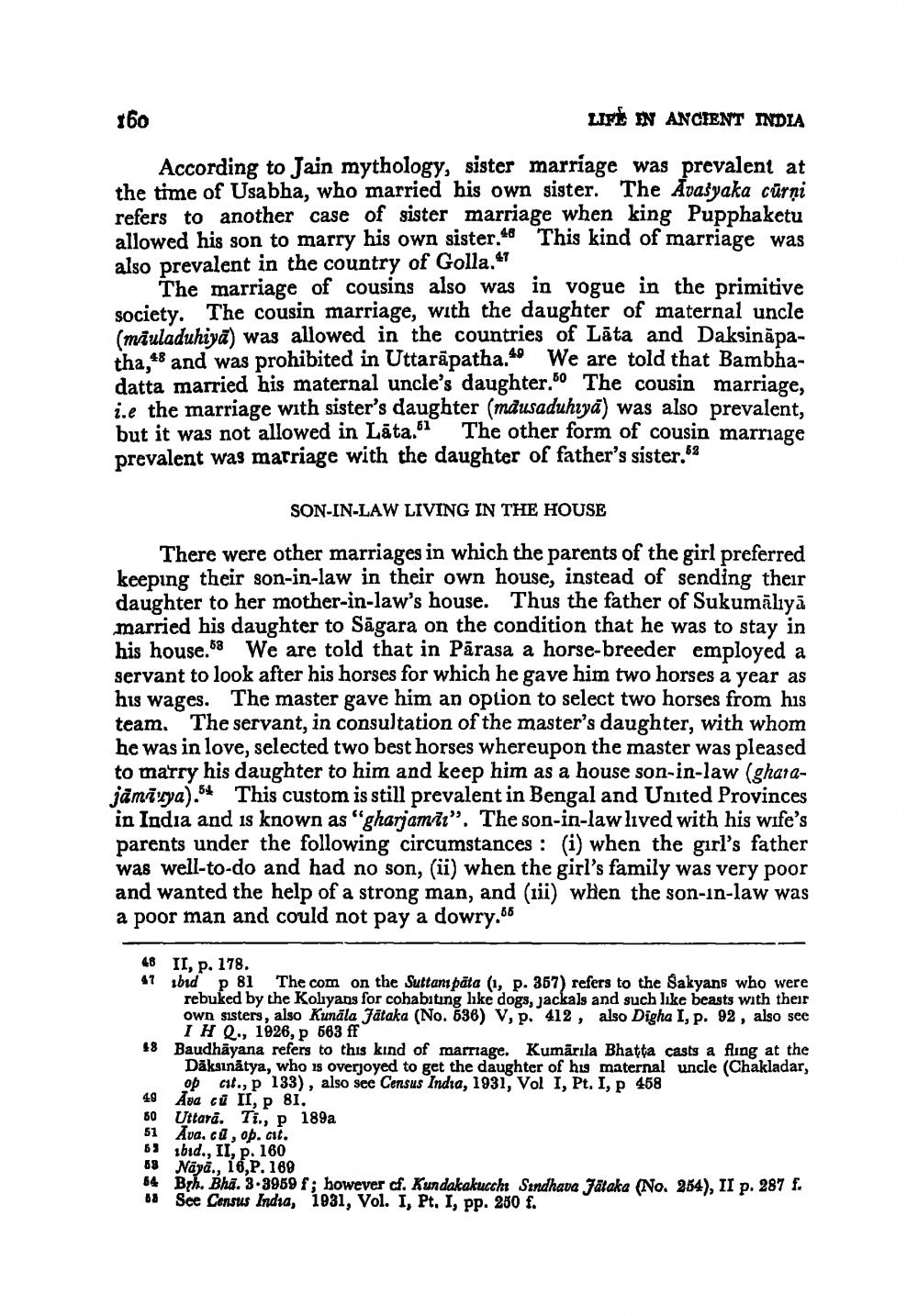________________
LIFE IN ANCIENT INDIA
According to Jain mythology, sister marriage was prevalent at the time of Usabha, who married his own sister. The Avasyaka cūrṇi refers to another case of sister marriage when king Pupphaketu allowed his son to marry his own sister.48 This kind of marriage was also prevalent in the country of Golla."
160
The marriage of cousins also was in vogue in the primitive society. The cousin marriage, with the daughter of maternal uncle (mauladuhiya) was allowed in the countries of Lata and Daksinäpatha, and was prohibited in Uttarapatha. We are told that Bambhadatta married his maternal uncle's daughter.50 The cousin marriage, i.e the marriage with sister's daughter (mäusaduhiya) was also prevalent, but it was not allowed in Lata."1 The other form of cousin marriage prevalent was marriage with the daughter of father's sister.52
SON-IN-LAW LIVING IN THE HOUSE
There were other marriages in which the parents of the girl preferred keeping their son-in-law in their own house, instead of sending their daughter to her mother-in-law's house. Thus the father of Sukumalıyā married his daughter to Sagara on the condition that he was to stay in his house.58 We are told that in Parasa a horse-breeder employed a servant to look after his horses for which he gave him two horses a year as his wages. The master gave him an option to select two horses from his team. The servant, in consultation of the master's daughter, with whom he was in love, selected two best horses whereupon the master was pleased to marry his daughter to him and keep him as a house son-in-law (gharajāmīya). This custom is still prevalent in Bengal and United Provinces in India and is known as "gharjamar". The son-in-law lived with his wife's parents under the following circumstances: (i) when the girl's father was well-to-do and had no son, (ii) when the girl's family was very poor and wanted the help of a strong man, and (iii) when the son-in-law was a poor man and could not pay a dowry.55
48 II, p. 178.
47
bid p 81 The com on the Suttani pāta (1, p. 357) refers to the Sakyans who were rebuked by the Koliyans for cohabiting like dogs, jackals and such like beasts with their own sisters, also Kunala Jataka (No. 536) V, p. 412, also Digha I, p. 92, also see IH Q., 1926, p 563 ff
18 Baudhayana refers to this kind of marriage. Kumārila Bhatta casts a fling at the Dāksinātya, who is overjoyed to get the daughter of his maternal uncle (Chakladar, op cit., p 133), also see Census India, 1931, Vol I, Pt. I, p 458
Ava cu II, p 81.
Uttara. Ti., p 189a
49 50
51 Ava. cũ, op. c
63 1bid., II, p. 160
58 Naya., 16,P. 169
54 Brh. Bha. 3.3959 f; however cf. Kundakakucchi Sindhava Jätaka (No. 254), II p. 287 f. See Census India, 1931, Vol. I, Pt. I, pp. 250 f.
68




